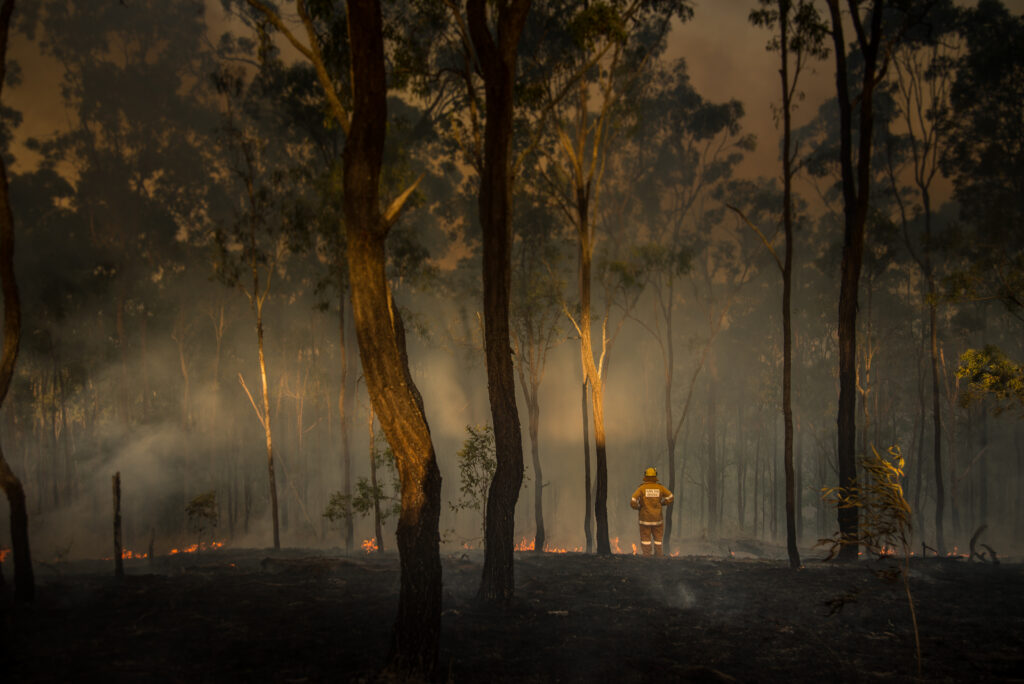The MJA–Lancet countdown shows that Australia is more engaged with the health impacts of climate change, but greater efforts to reduce our dependency on fossil fuels are urgently needed.
The 2024 report of the MJA–Lancet countdown on health and climate change is featured in the latest issue of the Medical Journal of Australia.
This is the 7th annual countdown, which examines five broad domains of health and climate change: health hazards, exposures and impacts; adaptation, planning and resilience for health; mitigation actions and health co-benefits; economics and finance; and public and political engagement.
“The Lancet countdown is a flagship international academic collaboration that brings together nearly 300 expert researchers from around the world to track both the health impacts of climate change and the health opportunities of climate action, engaging policy makers and health professionals with the evidence to inform a thriving future,” the authors wrote.
“In this, the seventh report of the MJA–Lancet countdown, we track progress on an extensive suite of indicators across these five domains, accessing, assessing and presenting the latest data and further refining and developing our analyses.”

Heat, fire and drought taking a toll
Heatwaves are one of the most significant climate change health hazards facing Australians.
Long term tracking shows a 26% rise in excess heat factor (the measure of heatwave intensity) in the past 20 years.
This excess heat has a flow-on effect to the population’s physical activity levels, reducing participation in physical activity for some while putting those who do participate at increased risk of heat stress.
Increasing droughts are putting unprecedented pressure on water supplies, with Australia recording its driest three-month period in over a hundred years in August to October 2023.
Increasing variability in bushfire exposure and risk, such as the spike seen in the 2019–2020 Black Summer bushfires, suggest that Australia can expect to see more extreme values in the future. The authors also note that Australia’s number of volunteer firefighters has declined by 17% in the past 7 years, with worrying implications for Australia’s capacity to fight future bushfires.
Fossil fuel still dominates
The countdown findings show minimal progress and a lack of systemic change when it comes to mitigating the health impacts of climate change, with a continued dependence on fossil fuels, lack of reduction in agricultural and livestock emissions, and rising bushfire smoke pollution.
While energy from coal decreased from 2021–2023, energy from oil increased, and there was a substantial increase in transport energy from petrol in 2021–2022.
The countdown also highlights the significant greenhouse gas emissions from the health care sector, which rose to unprecedented levels in 2021.
“These findings highlight the urgent need for substantial and coordinated decarbonisation action across sectors to mitigate climate change while improving public health outcomes,” the authors wrote.
Positive engagement in health and climate
The authors note that there are strong signs that Australians are increasingly engaged and acting on health and climate change.
Almost 40% of Australia’s electricity is now supplied by wind and solar power, and the sale of electric vehicles reached an all-time high in 2023.
Media articles discussing health and climate change have nearly tripled compared to a decade ago. In 2023, there was a 29% increase in scientific publications on Australian health and climate and a significant increase in health and climate change research grant applications.
In a new metric for this year’s countdown, the authors found that Australia is a hotspot for health and climate litigation, with health being raised in eleven climate cases from 2014 to 2023. One of these cases resulted in both the plaintiffs and respondents agreeing on the scientific evidence presented — demonstrating legally significant acceptance by the government of the health impacts of climate change.
Planning for the future
The authors note that Australia is playing catch-up with its national response to climate change, but some progress is being made.
In December 2023, the Australian Government released its first National Health and Climate Strategy, and allocated $27.4 million over two years to deliver the first National Climate Risk Assessment and National Adaptation Plan.
The Strategy outlines a whole-of-government plan for addressing the health and wellbeing impacts of climate change, from preventive health to aged care.
However, the authors argue that Australia will require a much more substantial policy roadmap if we are to combat the health impacts of climate change and achieve net zero emissions by 2050.
“Nationally, regionally and globally, the next five years are pivotal in reducing greenhouse gas emissions and transitioning energy production to renewables,” the authors wrote.
“Australia is now making progress in this direction.”
“This progress must continue and accelerate, and the remaining deficiencies in Australia’s response to the health and climate change threat must be addressed.”
Read the 2024 report of the MJA–Lancet countdown on health and climate change in the Medical Journal of Australia.
Subscribe to the free InSight+ weekly newsletter here. It is available to all readers, not just registered medical practitioners.

 more_vert
more_vert